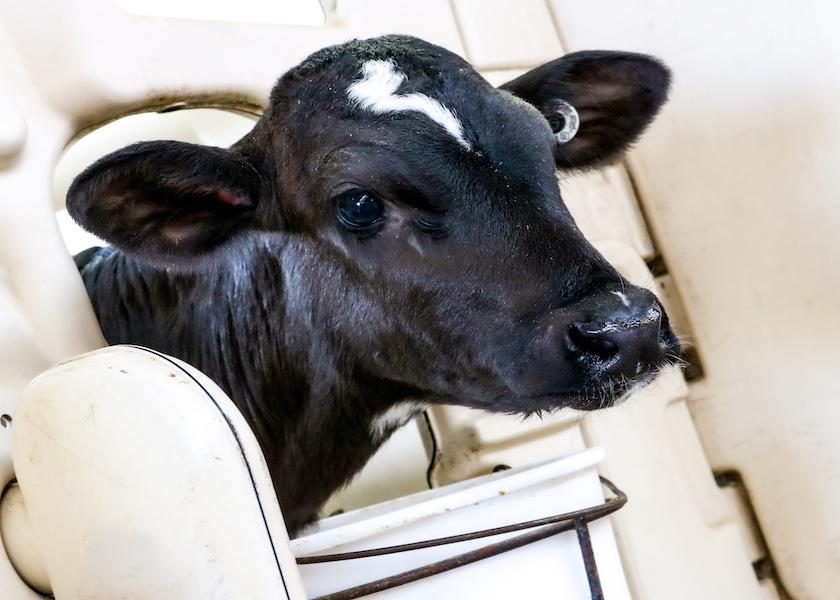More Milk Could Mean Faster Healing for Young Calves

It has been well-documented that feeding preweaned calves on a higher plane of nutrition improves calf health and performance, and even boosts first-lactation milk production.
Now, a group of Canadian researchers has produced evidence that providing calves more nutrients also may promote wound healing.
In a study recently published in the Journal of Dairy Science, researchers at the University of Guelph, Ontario, Canada evaluated the healing process following disbudding with a cautery iron. They sought to compare the speed of healing between calves fed a limited liquid ration (up to 6 liters of milk replacer per day), and a “biologically normal” diet (up to 15 liters of milk replacer per day).
A total of 80 Holstein heifer calves was entered into the study, with approximately half of the population enrolled in each feeding group. Disbudding occurred between 18 and 30 days of age, and healing outcomes were measured until 77 days of age.
All calves, regardless of treatment group, were given a lidocaine corneal nerve block and a non-steroidal anti-inflammatory drug prior to disbudding. Calves were fed via an automated CalfRail system and received their respective nutritional allotments over the course of 5 feedings per day.
Lead author Cassandra Reedman said nutrition and healing have been linked in human medicine, as malnutrition has been shown to impede wound healing. In this study, several factors pointed to a similar relationship between nutrition levels and resolution of disbudding wounds, including:
- Wound healing – Calves receiving higher amounts of milk replacer had wounds that were smaller in diameter than the limited-fed group, starting at 4 weeks post-cautery. Wound depth also was comparatively lower for the higher-fed group, starting at 2 weeks post-cautery.
- Healthy tissue regrowth – Throughout the post-cautery phase, regrowth of healthy tissue (epithelium) occurred 3.9 times more frequently in the calves fed on a higher plane of nutrition.
- Lying behavior – Calves fed more milk replacer had significantly higher activity levels. They had lower daily lying times, fewer lying bouts during the day, and longer lying-bout duration compared to the limit-fed group.
The researchers also measured wound sensitivity using the mechanical nociceptive threshold (MNT) method. MNT measures calves’ behavioral response when pressure is applied to the wound area.
Calves fed more nutrients showed greater pain sensitivity throughout the healing process. The authors theorized this result may be due to those animals’ faster healing time, which put wounds in a more sensitive stage during the study period. Or, their higher activity level may have simply made them more capable of responding to the test.
Reedman said an interesting overall finding was that the full resolution period for disbudding wounds is quite lengthy – 8 weeks or longer post-cautery. Only 12% of the wounds reached full healing by the end of the study (7-8 weeks post-cautery). The likelihood of calves beginning to form epithelial tissue on both wounds (though not necessarily fully healing) was more than double (134%) for calves on the more abundant feeding program.
For more on calves, read:
- Caffeine Perks up Calves, Too
- Calves Could Benefit from Physical Enrichment
- The Pros and Cons of Caustic Paste







